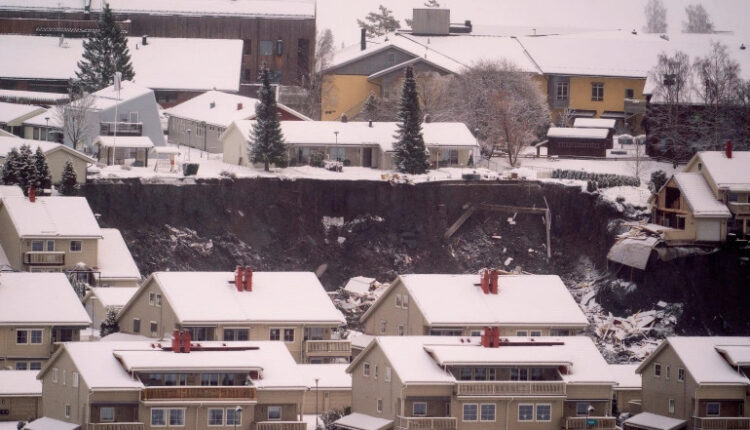Norway: 10 missing, including children, after landslide disaster
At least 10 people, including children, are missing after a landslide in southern Norway swept away more than a dozen buildings in the early hours of Wednesday, police said.
A rescue operation continued overnight with drones and helicopters, police said, adding at least 10 people were injured in the disaster, one of them critically.
The landslide struck a residential area in the municipality of Gjerdrum, about 30km (19 miles) north of the capital, Oslo. Police said 700 people had been evacuated from the area.
Photos of the site showed a large crater with destroyed buildings at the bottom of it. Other buildings hung on the edges of the crater, TV footage showed.
Two more houses collapsed into the crater on Wednesday afternoon, broadcaster NRK reported.
“It is a catastrophe,” Prime Minister Erna Solberg told reporters after visiting the site.
“There could be people trapped … but at the same time we can’t be sure because it is the New Year’s holiday, which means people could be elsewhere,” she said, adding that rescue operations could take a long time.
“The situation is still so unstable that it is impossible to do any (rescue) effort other than from helicopters.”
In a tweet on Wednesday, she wrote: “It hurts to see how the forces of nature have ravaged Gjerdrum.”
Helicopters continued to hover over the area as night fell, at times lowering emergency responders towards the debris of collapsed houses. Police said rescue operations would continue through Wednesday night into Thursday.
Residents spoke of their experience.
“There were two massive tremors that lasted for a long while and I assumed it was snow being cleared or something like that,” Oeystein Gjerdrum, 68, told NRK.
“Then the power suddenly went out, and a neighbour came to the door and said we needed to evacuate, so I woke up my three grandchildren and told them to get dressed quickly.”
Masses of earth are still moving in what has been one of the largest clay slides in recent Norwegian history, Toril Hofshagen, the regional head of the Norwegian Water Resources and Energy Directorate, told a news conference.
Southern Norway has seen large amounts of precipitation in recent days, which may have caused the clay soil prevalent in the area to shift, broadcaster NRK said.



